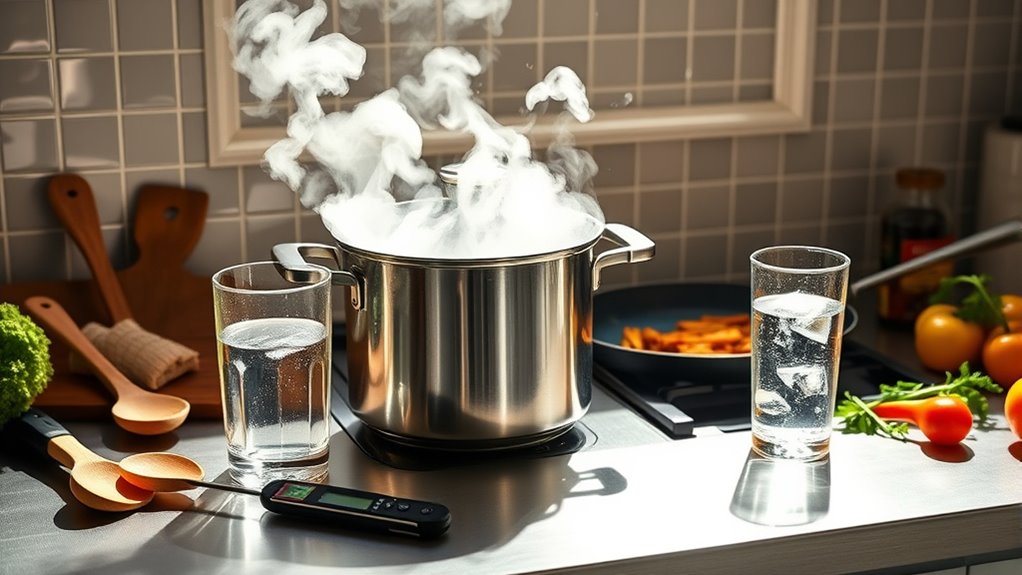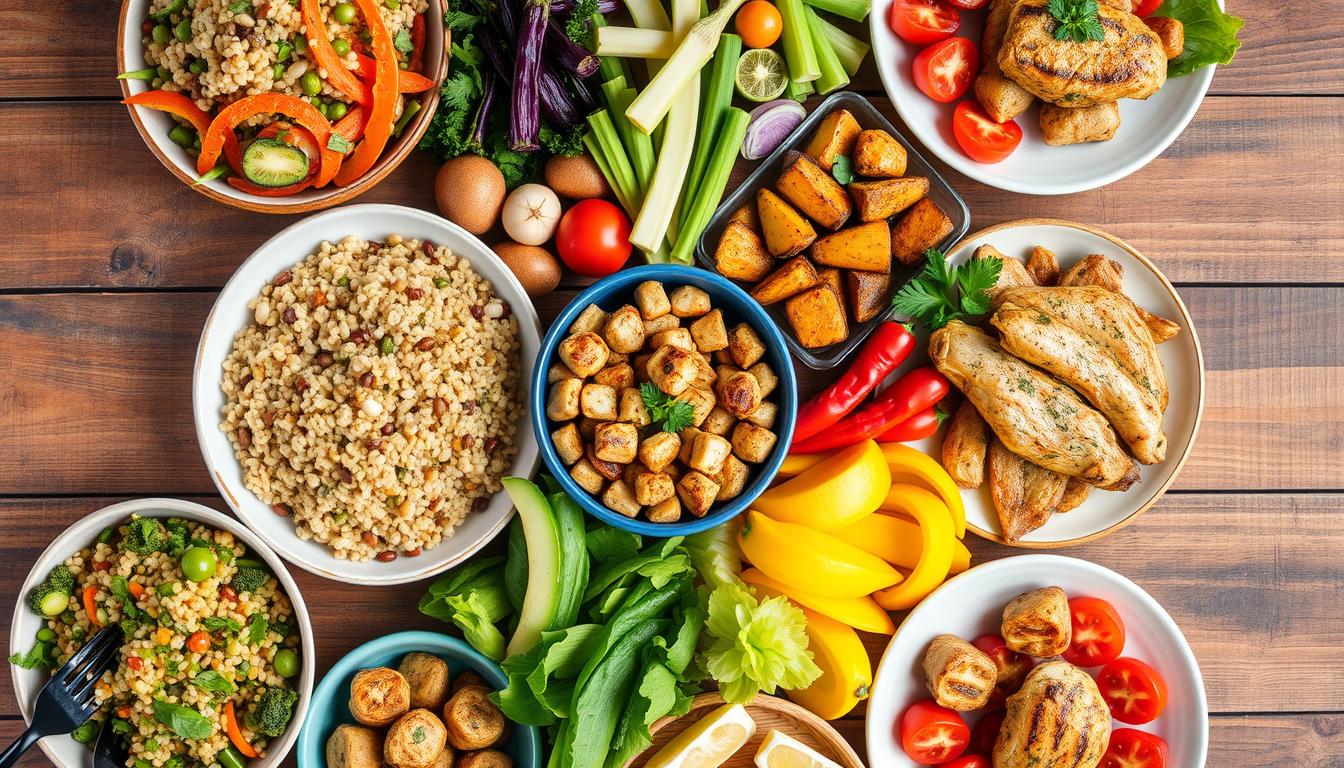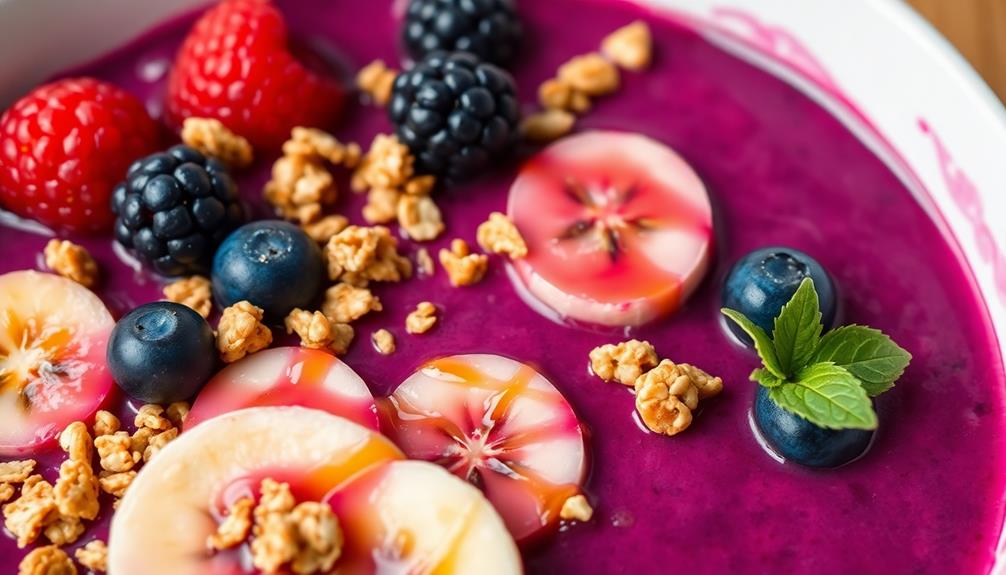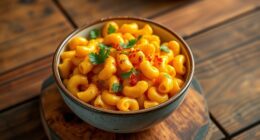Understanding the “danger zone”—40°F to 140°F—is key to keeping food safe in your home kitchen. Bacteria multiply rapidly within this range, so you should never leave perishable foods like meat or dairy out for more than 2 hours, or 1 hour if it’s above 90°F. Properly storing, cooking, and cooling food helps prevent foodborne illnesses. To discover practical tips on managing temps effectively, keep exploring how to stay safe with your food.
Key Takeaways
- The danger zone is 40°F to 140°F, where bacteria multiply rapidly, increasing food safety risks.
- Perishable foods should not stay in the danger zone for more than 2 hours; less if above 90°F.
- Proper cooking temperatures (165°F for poultry, 160°F for ground beef) kill harmful bacteria.
- Hot foods must be kept above 140°F, cold foods below 40°F, to prevent bacterial growth.
- Rapidly cooling leftovers by dividing into smaller containers reduces bacteria doubling in the danger zone.
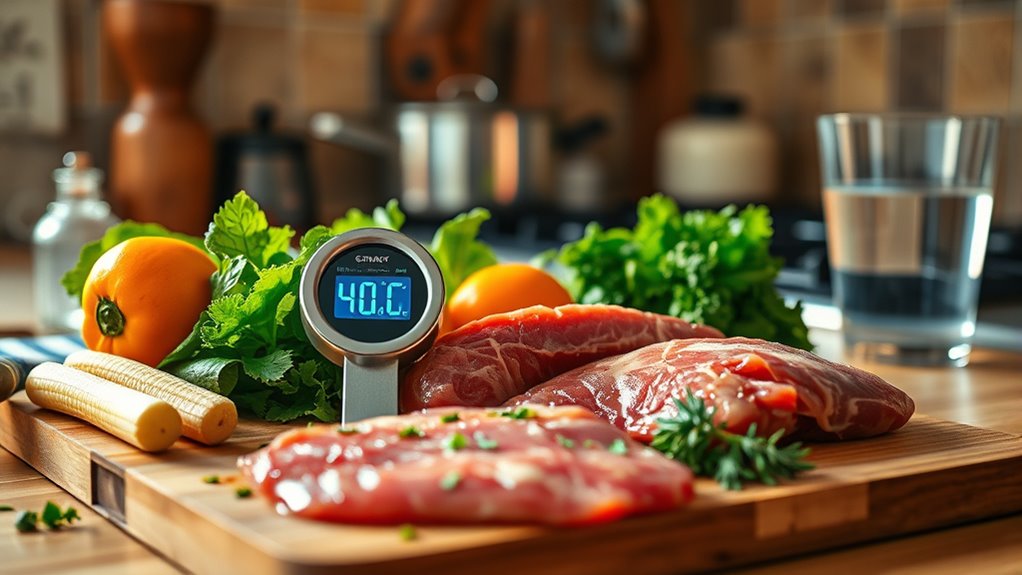
Many home cooks are familiar with the term “danger zone” when it comes to food temperatures, but there’s often confusion about what it truly means and how it impacts food safety. The danger zone refers to a specific temperature range where bacteria can grow rapidly, increasing the risk of foodborne illnesses. Understanding this range is vital for keeping your food safe. Typically, the danger zone falls between 40°F (4°C) and 140°F (60°C). When foods, especially perishable items like meat, poultry, dairy, and cooked leftovers, stay within this range for too long, bacteria multiply quickly, making the food unsafe to eat.
The danger zone is 40°F to 140°F, where bacteria grow rapidly and food becomes unsafe.
To guarantee food safety, you need to pay close attention to cooking temperatures and how long your food spends in this zone. For example, when you’re preparing a roast or frying chicken, using a reliable thermometer helps you verify that you’ve reached the proper internal temperature—which is 165°F (74°C) for poultry and 160°F (71°C) for ground beef. Reaching these temperatures kills harmful bacteria, preventing potential food poisoning. If you serve or store your food before it hits these safe internal temperatures, it could carry bacteria that multiply during the time spent in the danger zone. Regularly monitoring food temperatures is an effective way to prevent this issue and ensure safety.
It’s also essential to avoid leaving cooked foods at room temperature for extended periods. The general rule is that perishable foods shouldn’t sit out longer than two hours, or one hour if the temperature is above 90°F (32°C). This window minimizes the time food spends in the danger zone and reduces bacterial growth. If you’re meal prepping or hosting a gathering, keep hot foods hot by maintaining them above 140°F and cold foods below 40°F. Using chafing dishes, slow cookers, or ice baths can help regulate temperatures and maintain food safety. Additionally, understanding the temperature range where bacteria thrive helps you plan safer food handling practices.
In addition, when cooling leftovers, break large portions into smaller containers to cool more rapidly. This prevents foods from lingering in the danger zone and becoming unsafe. Remember, bacteria can double in number every 20 minutes when conditions are right, so quick cooling is key. Overall, understanding the importance of proper cooking temperatures and controlling how long your food remains in the danger zone helps you prevent illness and enjoy safe, delicious meals. Keeping these principles in mind transforms food safety from a vague concept into practical steps you can implement every day in your kitchen.
Frequently Asked Questions
How Does Humidity Affect the “Danger Zone” Temperature Range?
Humidity impact plays a significant role in how the “danger zone” temperature range affects your food safety. When moisture levels are high, bacteria thrive more easily because humidity helps maintain the ideal environment for their growth. Conversely, low humidity can slow bacterial growth, even if temperatures are within the danger zone. So, managing moisture levels and understanding humidity’s effect helps you better control food safety in your kitchen.
Are There Specific Foods More Prone to Bacterial Growth in the Danger Zone?
Did you know that perishable foods like poultry, seafood, and cooked eggs are 10 times more susceptible to bacterial growth? These food types have higher bacterial susceptibility when kept in the danger zone. You should be especially cautious with leftovers and dairy products, as bacteria thrive between 40°F and 140°F. To prevent foodborne illnesses, always refrigerate or cook these foods promptly and avoid leaving them in the danger zone too long.
Can Cooking at High Altitudes Alter the “Danger Zone” Temperatures?
Altitude effects can definitely influence cooking temperatures, so you might need to make cooking adjustments at high elevations. While the “danger zone” temperatures remain the same, lower boiling points and longer cooking times mean you should monitor food more closely. To stay safe, use a food thermometer and adjust your recipes accordingly, ensuring foods reach safe internal temperatures despite altitude effects. This helps prevent bacterial growth even when cooking at high altitudes.
How Quickly Can Bacteria Multiply Within the Danger Zone?
Bacteria can multiply rapidly within the danger zone, typically doubling every 20 minutes if temperature control isn’t maintained. If you leave food in this range (40°F-140°F) too long, bacterial proliferation accelerates, increasing your risk of foodborne illness. To prevent this, you need to monitor temperatures carefully, refrigerate promptly, and avoid leaving perishable foods out. Proper temperature control slows bacterial growth and keeps your food safe.
What Are the Best Methods to Quickly Cool Hot Foods Safely?
To guarantee food safety through rapid cooling, you should divide hot foods into smaller portions, use shallow containers, and chill them promptly in the refrigerator. Stirring hot foods in an ice-water bath also helps transfer heat quickly. Avoid leaving foods at room temperature, as bacteria multiply rapidly. These methods promote rapid cooling, reducing the risk of foodborne illnesses and maintaining safe temperatures for consumption.
Conclusion
Now that you know the real danger zone temperatures, you can confidently protect your loved ones. Picture your kitchen as a safe harbor, where every meal is prepared with care and precision. By keeping your food out of the risky range, you’re shielding your family from unseen threats lurking in the shadows of bacteria. Take control, stay vigilant, and turn your kitchen into a fortress of freshness and safety. Your loved ones will thank you for it.
